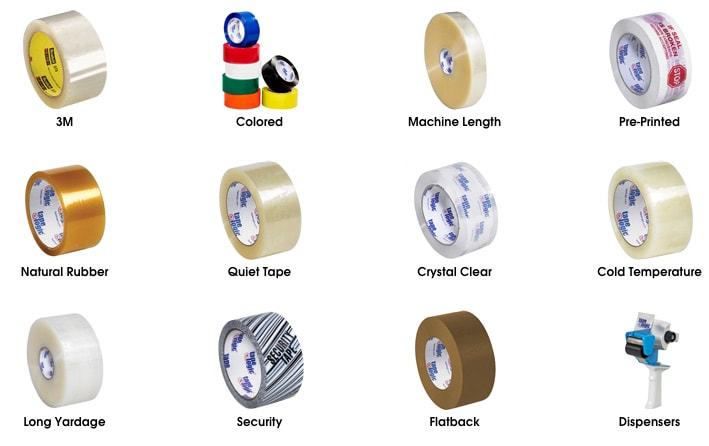When sealing packages its important to consider the many factors at play that could help or hurt your distribution system. The strength of the sealants that you decide to use along with their resiliency to different climates can determine if your packages will be secure and theft-resistant. They types of cargo you are shipping and their weight can also result in varying methods transport. There are a myriad of options available for sealing containers, and in this post we break them down to find out what methods are the most efficient for your bottom line.
Pressure Sensitive Tapes
Pressure sensitive tapes are petroleum based tapes, made out of plastic film with a sticky substance on one side that is designed to adhere to most surfaces. You have probably seen this kind of tape applied with tape guns or similar tools that make application easy and efficient. Since pressure sensitive tape is made from petroleum it is typically an inexpensive product to use to seal packages, yet the costs could accumulate if sealing required multiple layers of tape. In addition, the shiny plastic makes it harder to print upon and companies could lose on a valuable opportunity for branding. This kind of tape is easy to apply, but also easy to remove leaving little to no trace of breaching. Because of this factor theft is a big concern when using pressure sensitive tape. In addition pressure sensitive tape is not resilient to extreme climate fluctuations. Extremely hot, humid, cold or dry environments can impact the tape, allowing for dirt and grime to breach the sticky seal and ultimately leave your items exposed. Acrylic packaging tape is one of our most popular pressure sensitive tapes
Water Activated Tapes
Water activated tape is made out of Kraft paper and a sticky adhesive that is developed from starch. This adhesive reacts strongly to water, and once moistened the tape will form a permanent seal by molding to the carton material of the container. To get this water-bonding effect suppliers will apply the tape with a type of dispenser that is activated by water. This style of tape is very strong and occasionally can contain layers of additional reinforcement like fiberglass. Water activated tape is more costly than pressure sensitive tape, although its possible to use less while packaging and achieve a good result. And for companies interested in taking advantage of taping space for additional branding, water activated tape easily allows for printing or stamping. Because of the strong bond that occurs when the adhesive is activated it is nearly impossible to break this seal without avoiding detection, meaning that water activated tape is an excellent choice for theft prevention. In addition, this strong adhesion also prevents wear and tear from varying climate conditions. Most types of extreme weather can be handles by water activated tape without the pesky side effect of dirt or debris creeping under the seals.
Strap Close
The kind of carton closure that you choose might also vary based upon the physical characteristics of your particular shipment or product. A series of straps (also known as poly strapping) can be used to lash together your cargo, joined together at strategic points called the seal joint. These joints buckles are made from either plastic or steel and are the weakest point of this style of sealing so it is wise to select your particular seal joint with considerations to your needs. If your particular shipment is low in volume, tension and weight you could use plastic or steel buckles that don’t require the additional application of tools to hold things in place. However, for shipments that are lower volume but have high levels of tension or weight probably need a combination of metal seals and manual tensioners. For these heavy freights you’ll want to select a system that has a high percentage of joint efficiency (the percent of joint strength in relation to the break strength of the strap). As a general rule, the heaviest of loads typically require strapping made from resilient polyester strappings and metal seals that have additional texture as a component for extra reinforcement.
Hopefully these tips have you ready to pack, seal and ship your item to its destination. If you have any more questions about the different ways you could seal your package, or if you just want to find out more about what we offer feel free to give us a call at (804) 649-1111
At SSI Packaging Group we have a dedicated team of packaging specialists who are ready to fill all of your packaging needs.

